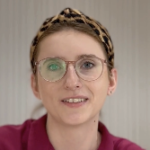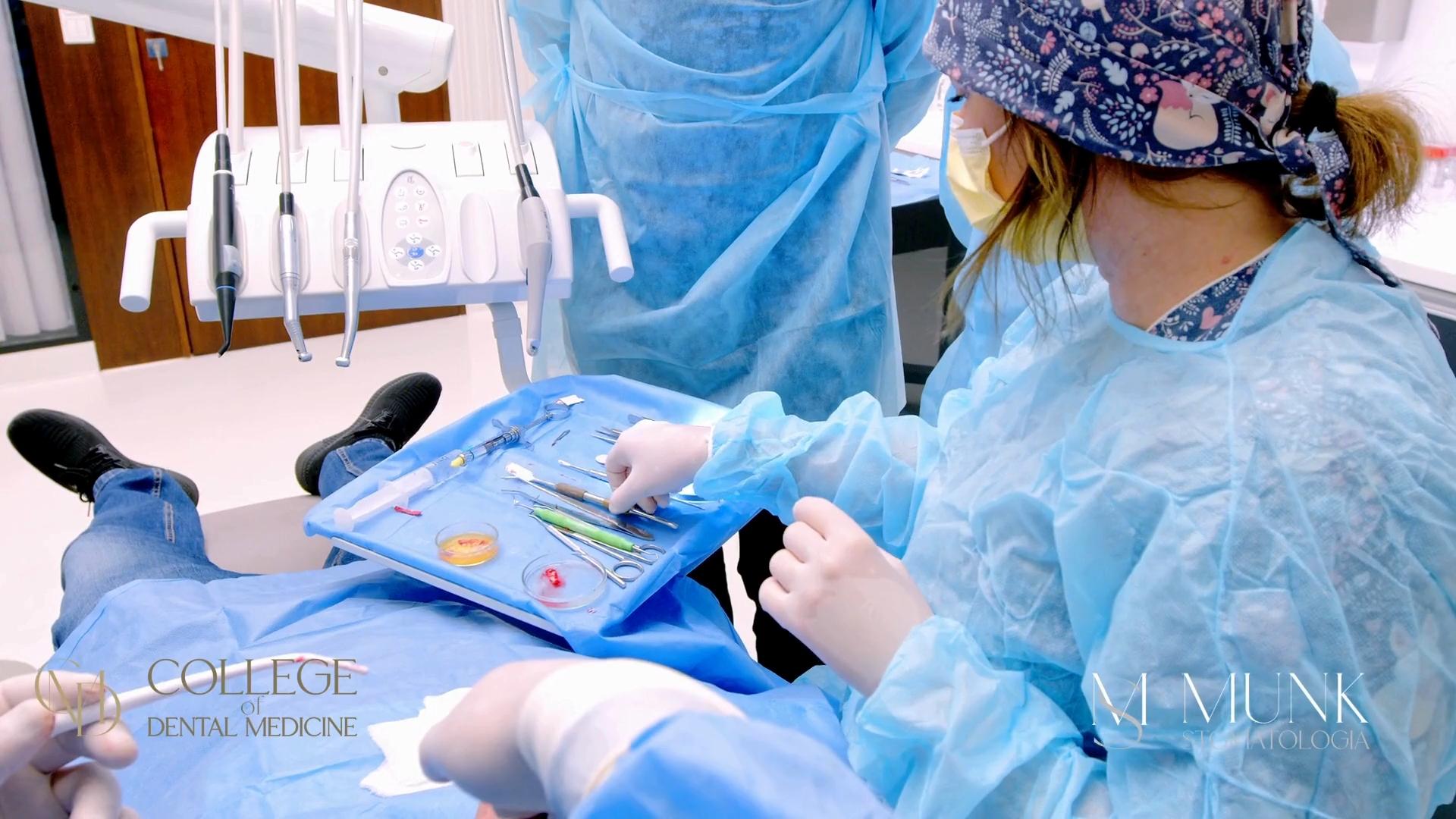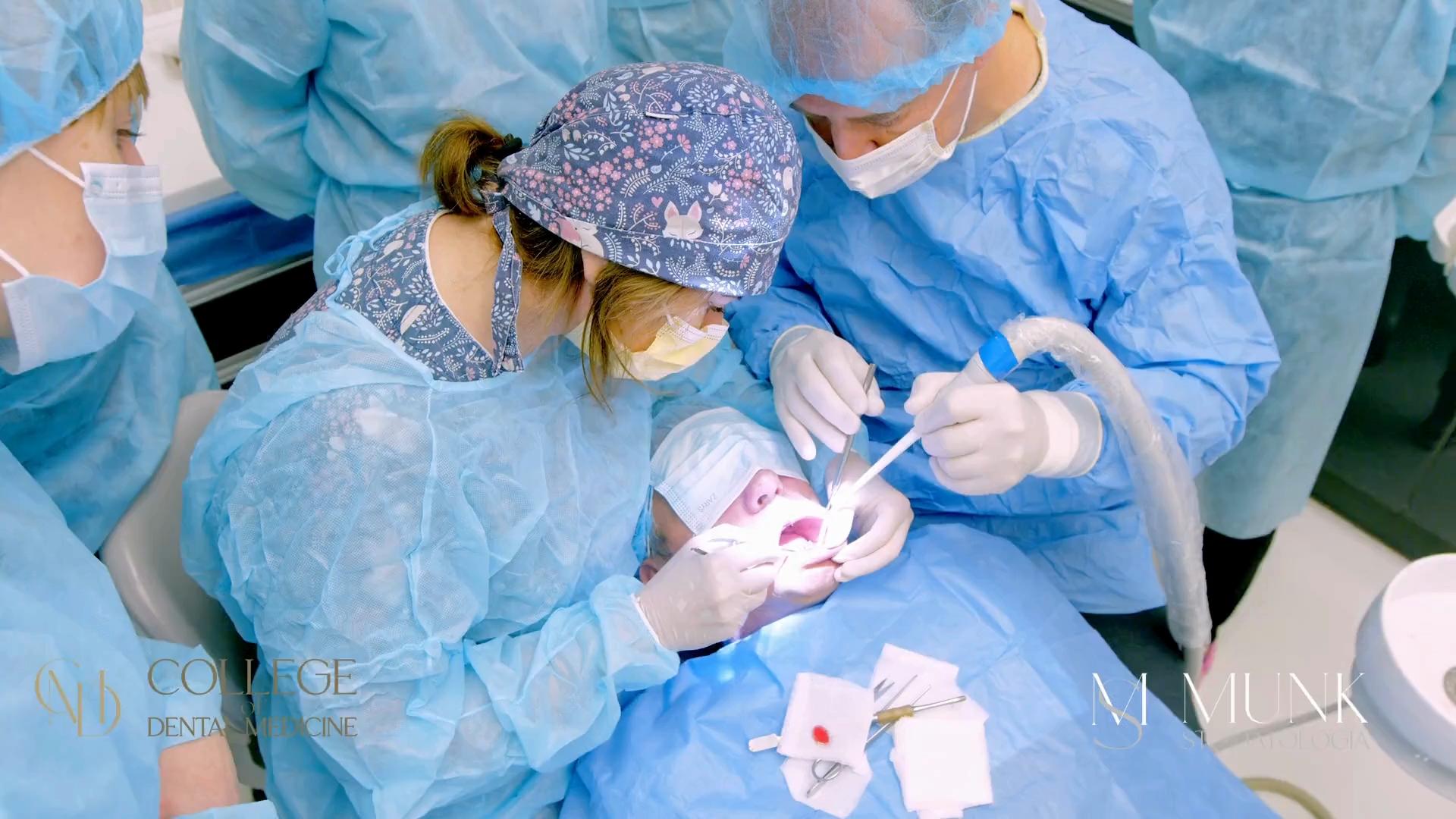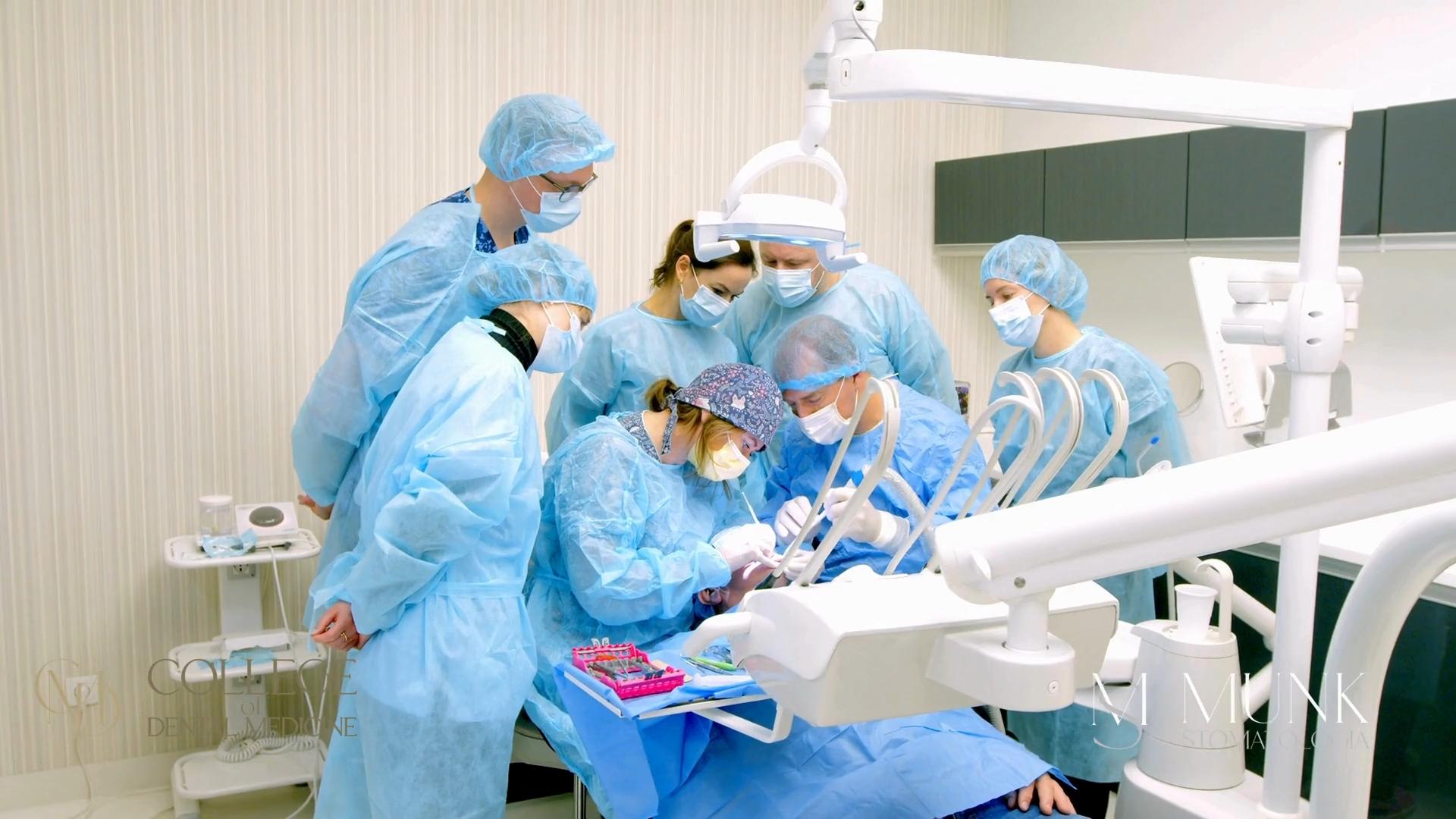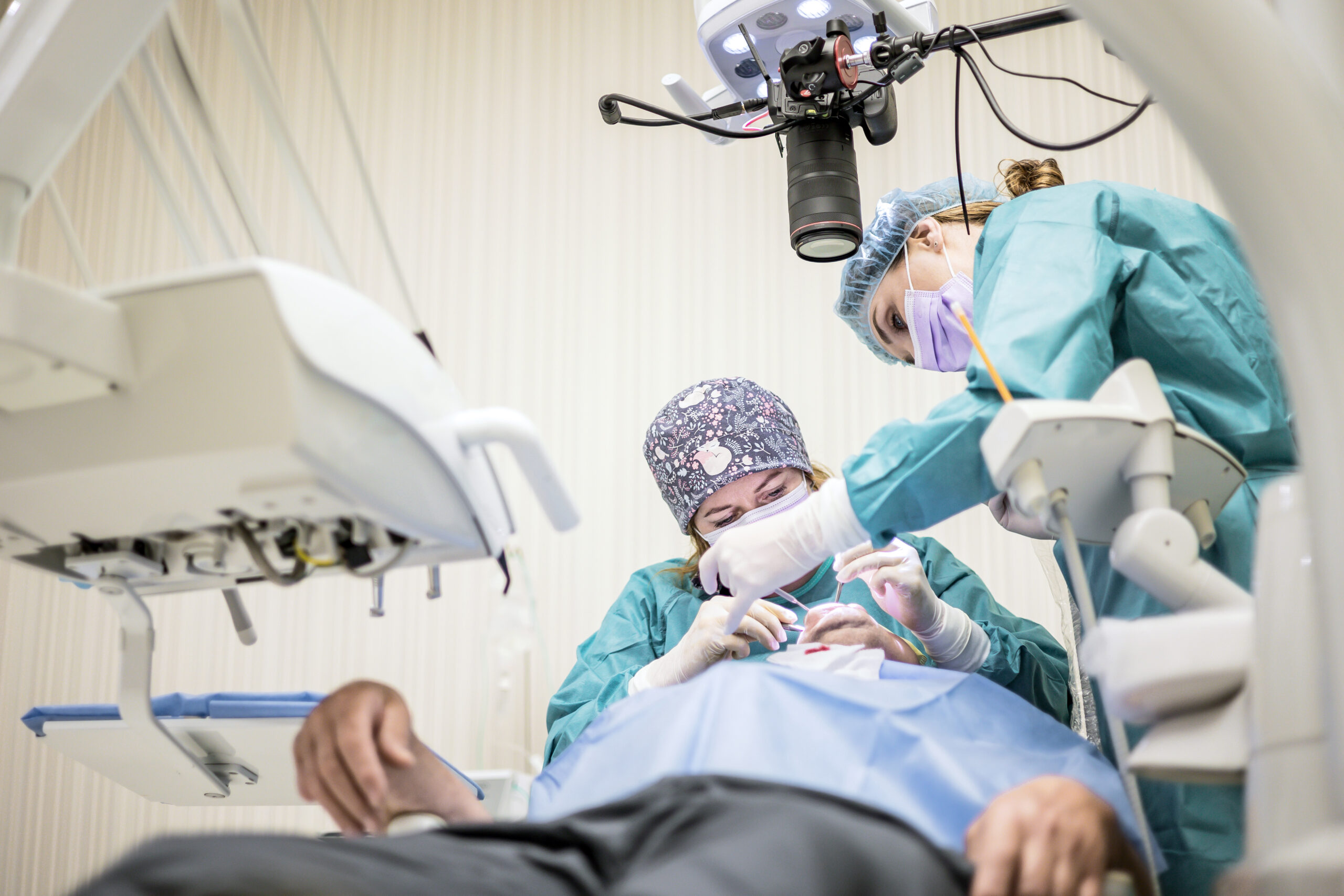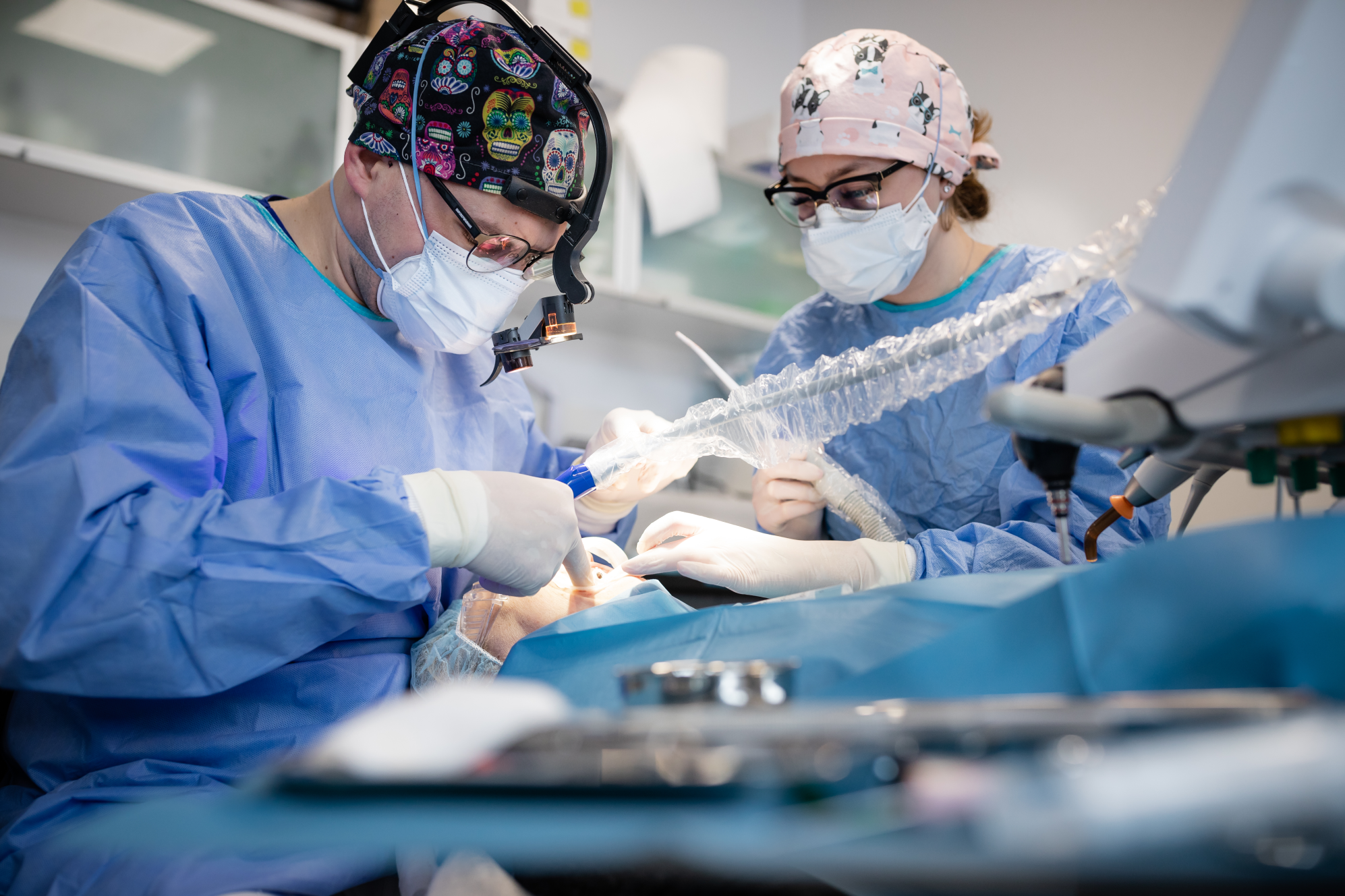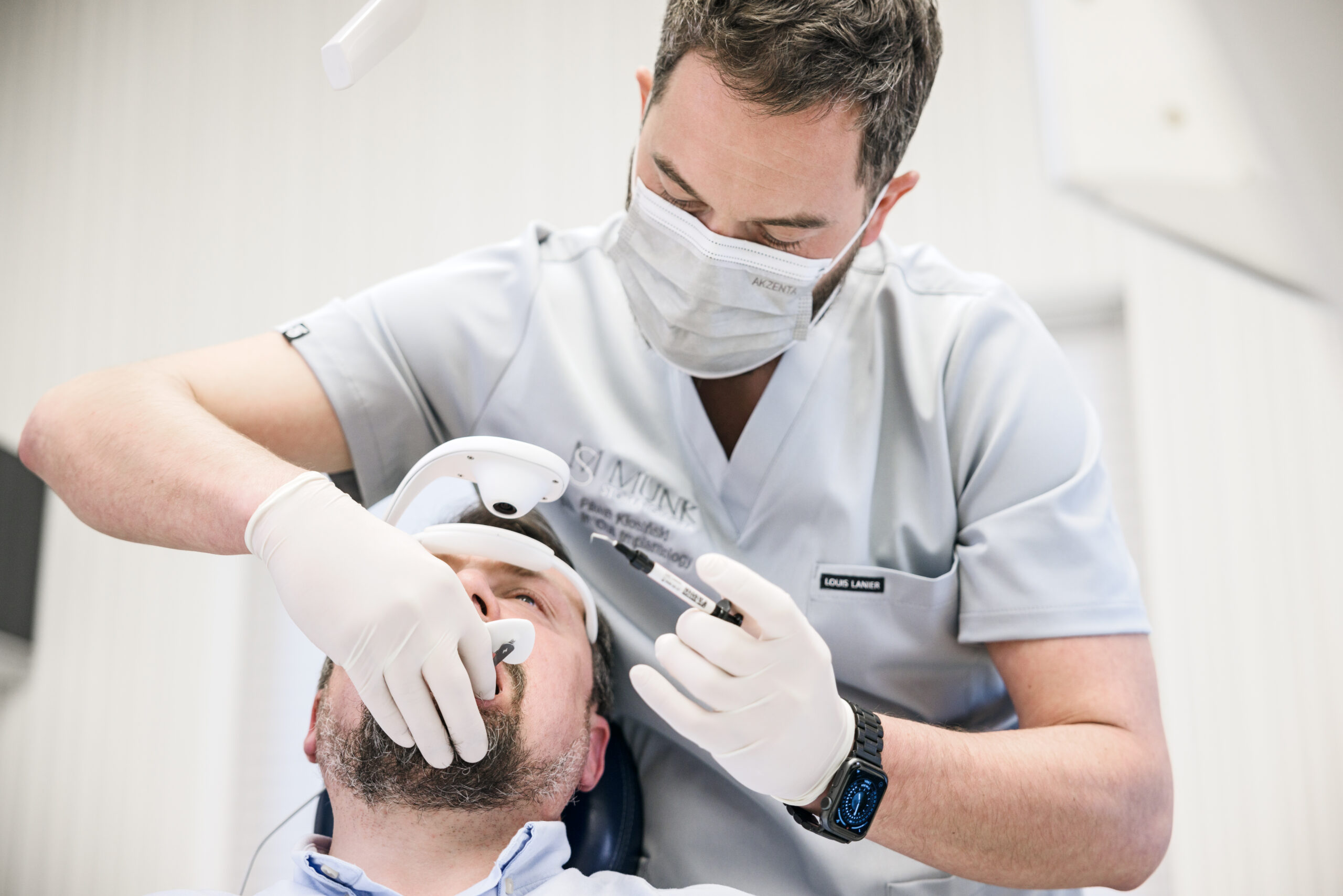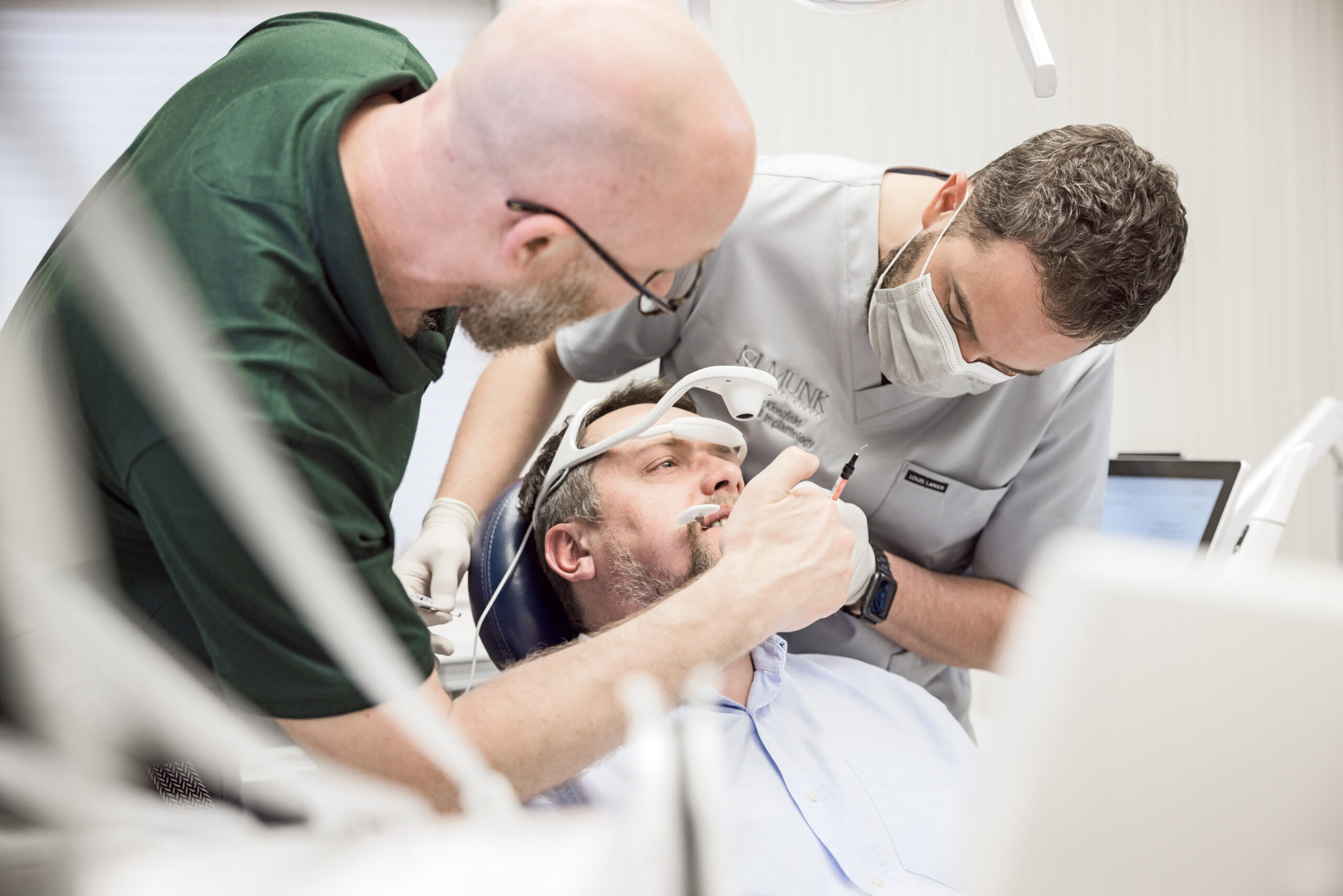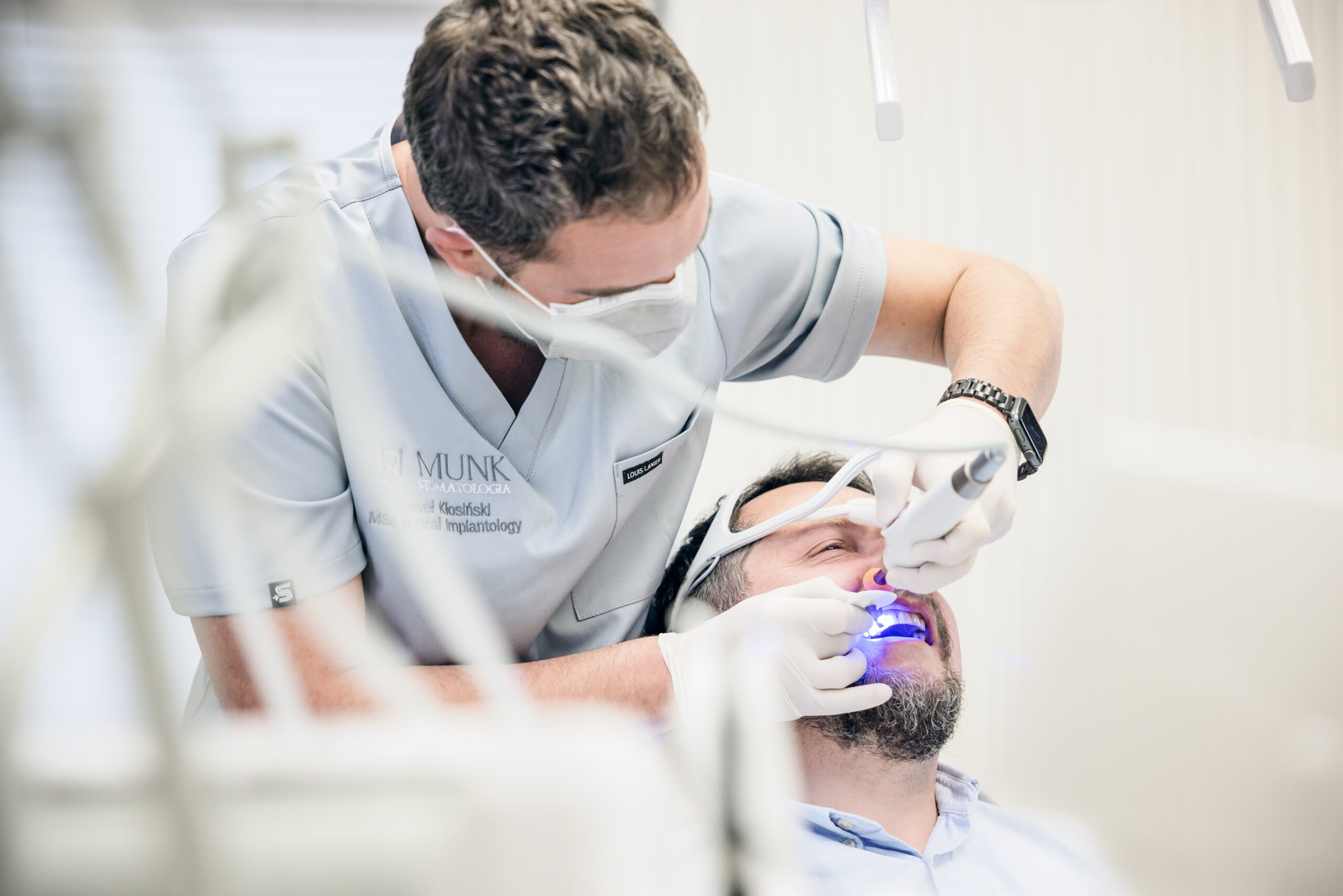

Curriculum implantoprotetyczne
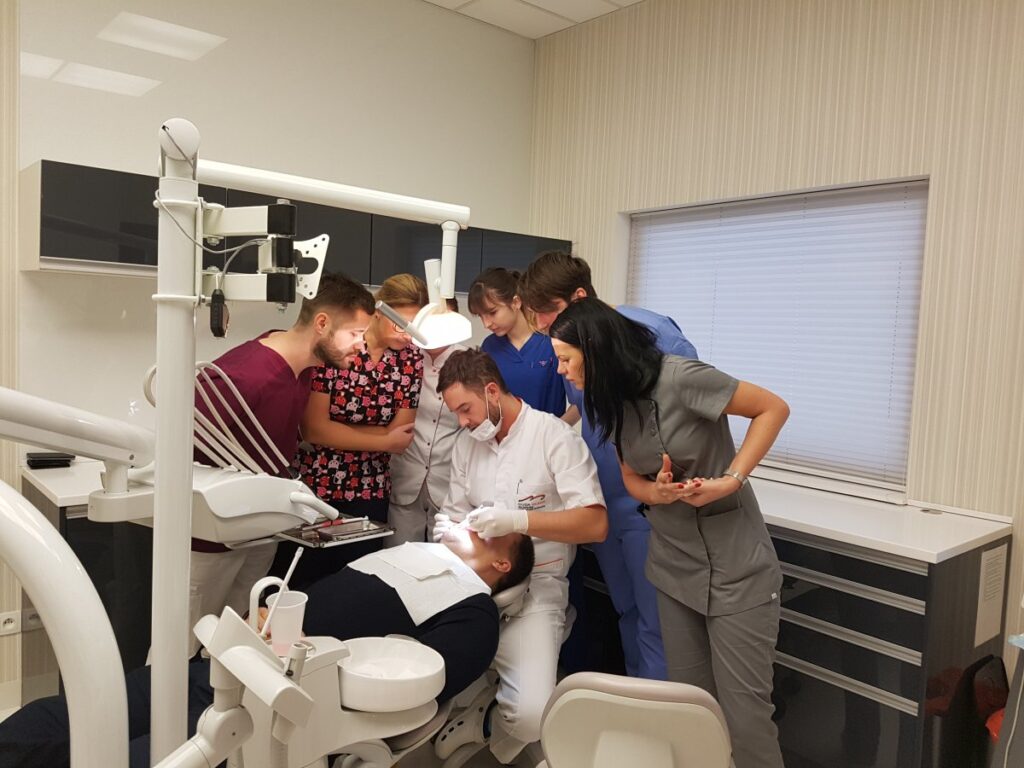
- 24 godziny zajęć z pacjentami + warsztaty + wykłady = 44 godziny zajęć.
- Tylko praktyczne informacje.
- STEP BY STEP od pojedynczej korony na implancie do pełnych rekonstrukcji.
- Technologie klasyczne + technologie najnowsze.
- Każdy uczestnik otrzymuje 44 punkty edukacyjne.
- Liczba miejsc ograniczona, 6-cio osobowe grupy.
- Język kursu:
- polski,
- angielski.
Program
lek. dent. Paweł Kłosiński Master in Oral Implantology
- Planowanie leczenia, backward planning.
- Modelowanie diagnostyczne: Waxup, Mockup.
- Rodzaje prac implantoprotetycznych: korony, mosty, overdenture.
- Wskazania i przeciwwskazania do konkretnych rodzajów prac.
- Czynniki warunkujące sukces w wybranych metodach leczenia.
- Biomechanika w implantoprotetyce.
- Instrumentarium, algorytmy postępowania.
- Materiały używane w implantoprotetyce.
- Odsłonięcia implantów – techniki postępowania.
- Metody kształtowania profilu wyłaniania.
- Wyciski transferowe / skanowanie.
- System CAD-CAM. Możliwości i ograniczenia.
- Uzupełnienia tymczasowe.
- Próba klucza, przymiarka podbudowy, oddanie pracy.
- Uzupełnienia dokręcane / wklejane.
- Warunki długofalowego powodzenia leczenia.
- Adaptacja pacjenta do nowych warunków w jamie ustnej.
Warsztat: materiały, części, instrumentarium, techniki stosowane w implantoprotetyce.
lek. dent. Jakub Munk Master in Oral Implantology
- Podstawy okluzji, dlaczego okluzja jest ważna. Dokumentacja w okluzji.
- Omówienie podstawowych metod ustalania zwarcia u pacjentów uzębionych, w brakach częściowych, w bezzębiu. Współpraca z technikiem z uwzględnieniem okluzji. Sprzęt wykorzystywany do analizy i rejestracji zwarcia.
- Estetyka kosztem wysokości zwarcia, na ile możemy sobie pozwolić bez uszczerbku dla funkcjonowania US jako całości, metody diagnostyki (TK, RTG), współpracy z technikiem (rejestraty okluzyjne) i bezpiecznej adaptacji do nowej wysokości zwarcia.
- Przygotowanie pacjenta do zmiany warunków zwarciowych – szyna okluzyjna, leczenie wieloetapowe, interdyscyplinarne. Chronologia pracy.
- Współpraca wielospecjalistyczna w leczeniu pacjentów trudnych – z problemami kolizyjnymi.
- Ustalanie zwarcia a napięcie mięśni żucia-podstawowe metody rozpoznawania zaburzeń czynnościowych, sposoby diagnostyki i podstawy fizjoterapii i farmakoterapii. Postępowanie okołozabiegowe z pacjentem poddawanym dużym zmianom strukturalnym: ekstrakcje, szlifowanie, długotrwałe procedury implantologiczne, czasochłonny proces wytwarzania nowego uzupełnienia protetycznego. Konieczność doprowadzenia do fizjologicznego napięcia mięśni żucia w tym okresie oraz utrzymania prawidłowego napięcia przez cały okres leczenia oraz adaptacji do uzupełnień protetycznych
- Podstawowe założenia okluzji i ich zastosowanie w implantoprotetyce.
- Pojęcie guzków podtrzymujących i prowadzących, prowadzenie kłowe, grupowe, okluzja obustronnie zbalansowana.
- Okluzja w implantoprotetyce – koncepcje bezpiecznego zgryzu: -Payne’a (guzek-bruzda, w long centric zęby starte), Thomas’a (guzek-listwa brzeżna, dwie wypukłe powierzchnie).
- Okluzja pasywna (ograniczenie powierzchni okluzyjnej w wymiarze poziomym), koncepcja przęsła biernego, redukcja powierzchni żującej.
- Ustalenie optymalnego kierunku obciążenia wszczepów, eliminacja sił ścinających i rotacyjnych. Przenoszenie sił zgodnie z długą osią implantu.
- Ostrożnie z przemodelowaniem konstrukcji, jeśli wykonujemy rozbudowę pomierzch zwarciowej należy ją powiększać symetrycznie.
- Podparcia okluzyjne (punkty kontaktu) w osi implantu, lub blisko jego centrum.
- Overjet, overbite około 1 mm.
- Płaski kąt nachylenia drogi stawowej (normalnie 33stopnie), implantoprotetyka 30 stopni. Małe stopnie nachylenia guzków, płaskie, mniej zaklinowania.
- Zagadnienie ruchomości zębów w trakcie żucia a ruchomości (lub jej braku) w przypadku implantów- pojęcie wolno działającego obciążenia. Zasada niełączenia zębów własnych z implantami w pracach kombinowanych. Element planowania uzupełnień protetycznych na wstępnych etapach leczenia- wykorzystanie podłoża, analiza ruchomości własnych zębów, podatności na siły podczas żucia oraz w czasie obciążenia para funkcjonalnego(większa ruchomość zębów).
- Decyzja co do sposobu osadzenia pracy protetycznej na łącznikach implantoprotetycznych: prace przykręcane czy cementowane?
- W pracach przykręcanych wielopunktowe kontakty okluzyjne są trudniejsze do odbudowania z powodu konieczności zamknięcia otworów na śruby. Prace cementowane lepiej odbudowują okluzję, prace skrawane lub odlewane z metalu pozwalają na ostro konturowość i precyzję wykonania. Prace ceramiczne obrabiane w wysokiej temperaturze charakteryzują się nieprzewidywalnym kształtem i przypadkowymi kontaktami okluzyjnymi pomiędzy powierzchniami zwarciowymi.
- Rodzaje uzupełnień protetycznych stosowanych w implantoprotetyce u pacjentów z podejrzeniem zaburzeń czynnościowych US – spokój w fazie podtrzymującej leczenia implantoprotetycznego (bruxcir, ścieralna porcelana, zęby kompozytowe w pracach ruchomych, szyna zapobiegająca powstawaniu nadmiernych naprężeń pomiędzy elementami odbudowy protetycznej po zmianie wzajemnych relacji przestrzennych w US.).
- Czy rodzaj materiału z jakiego wykonane jest uzupełnienie stałe lub ruchome oparte na wszczepach zmienia obciążenie jakiego doznaje kość wyrostka zębodołowego? Elementy wytłumiające jak olicowanie kompozytowe, wkładki elastyczne. Elementy mocniej zakotwiczone, czyli bardziej obciążone przenoszą na siebie większe siły. Warunkiem długowieczności pracy protetycznej jest prawidłowo zaplanowana, dopasowana do istniejącej sytuacji zwarciowej, okluzja.
lek. dent. Paweł Kłosiński Master in Oral Implantology
- Nowoczesne technologie w implantoprotetyce – integracja skanowania i obrazu CBCT
- Kompleksowe planowanie leczenia implantoprotetycznego przy użyciu nowych technologii:
- skanowanie pacjenta przy użyciu tomografu CBCT oraz skanera wewnątrzustnego 3Shape® Trios3,
- łączenie obrazów CBCT i skanów wewnątrzustnych w programie Implant Studio,
- planowanie rozmieszczenia implantów na podstawie połączonych obrazów,
- projektowanie szablonu chirurgicznego na podstawie zaplanowanej pozycji implantów,
- projektowanie odbudowy protetycznej zgodnie z zaplanowaną pozycją wszczepów,
- drukowanie szablonu chirurgicznego i odbudowy tymczasowej.
- Zastosowanie szyn korygujących wady zgryzu jako wsparcie leczenia implantoprotetycznego.
- Koncepcja korygowania wad zgryzu przy pomocy szyn Clear Aligner.
- Możliwości zastosowania szyn do repozycji zębów w protetyce oraz implantoprotetyce ze względu na estetykę oraz funkcjonalność przyszłej odbudowy.
- Zastosowa nie metody termoformowania w implantologii i implantoprotetyce.
lek. dent. Krzysztof Pluta
Warsztat: skanowanie wewnątrzustne, skanowanie modeli, tradycyjne wyciski transferowe.
lek. dent. Paweł Kłosiński Master in Oral Implantology
- Dokumentacja oraz archiwizacja etapów oraz rezultatów leczenia.
- Powikłania w implantoprotetyce oraz sposoby radzenia sobie w trudnych sytuacjach – Troubleshooting.
- Utrzymanie efektów leczenia implantoprotetycznego.
- Specyfika higienizacji pacjenta implantologicznego.
- Wpływ leczenia implantoprotetycznego na prawidłową wymowę u pacjenta.
- Kliniczno techniczne aspekty wykonawstwa uzupełnień implantoprotetycznych (wykład / dyskusja).
- Podsumowanie.
TERMINARZ
| Nazwa | Terminy | Cena |
|---|---|---|
XXIII EDYCJA – STYCZEŃ 2025 Rekrutacja zamknięta
| 23.01.2025 – 24.01.2025 13.02.2025 – 14.02.2025 13.03.2025 – 14.03.2025 24.04.2025 – 25.04.2025 | 14 200 PLN |
XXIV EDYCJA – WRZESIEŃ 2025
| 18.09.2025 – 19.09.2025 30.10.2025 – 31.10.2025 20.11.2025 – 21.11.2025 11.12.2025 – 12.12.2025 | 15 200 PLN |
Jestem bardzo zadowolony z całego Curriculum. Paweł Kłosiński, prowadzący zajęcia, bardzo dobry wykładowca, bardzo fajny człowiek. Było mnóstwo pytań, na każde z nich merytorycznie odpowiadał, wszystko przedstawione w sposób bardzo metodyczny, jasny i klarowny. Podczas kursu była możliwość asystować i uczestniczyć przy zabiegach i to jest super przy takich szkoleniach. Ja będę polecał ! XX Edycja - Curriculum Implantoprotetyczne
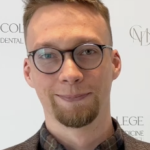
Jakub Ratka
Lek. dent.
Bardzo długo szukałem szkolenia, które by mogło zapewnić mi taki zakres, na który mi zależało i totalnie nie żałuje, że wybrałem akturat to szkolenie. Bardzo dużo wiedzy teoretycznej, poparte wszystko praktyką. Niesamowicie duża wiedza, ogrom tej wiedzy, ale przedstawiony w bardzo przystępny sposób, taki, że mogę bez problemu teraz pójść do pacjenta w poniedziałek i zaoferować mu jak najlepszą usługę. XX Edycja - Curriculum Implantoprotetyczne
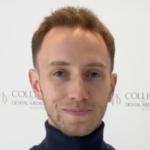
Szymon Nowak
lek. dent.
Na szkoleniu wprowadzaliśmy implanty, było bardzo intensywnie. Mieliśmy 6 zabiegów, bo bardzo dużo w wprowadzanych implantów właśnie skończyliśmy mega duży zabieg pacjenta z wprowadzeniem 4 implantów, z podniesiemiem na zatoki, Z PRF'em, Tak, bardzo intensywnie spędzony czas.
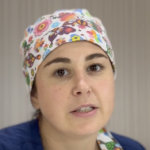
Marta Katarzyńska-Konwa
Dr n. med.
Szkolenie jest mega, bardzo profesjonalne, Dr Munk jest świetnym nauczycielem, mentorem i daje nam wiele bardzo cennych rad, z czego możemy skorzystać i jesteśmy bardzo zadowoleni.
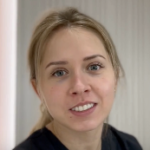
Katarzyna Czarzasta
lek. stom.
Było bardzo dobrze, było to co czego oczekiwałem. Miła atmosfera, szkolenie prowadzone we właściwym tempie. Polecam !
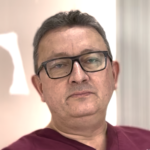
Janusz Banasik
lek. stom.
Czuję się naładowana, wiedzą i nowymi umiejętnościami. Na pewno były to intensywne trzy dni. Natomiast myślę, że zarówno ja i pozostali uczestnicy, wyciągnęliśmy wiele z tych zajęć. Wkręciliśmy swoje pierwsze implanty, także było ekstra.
